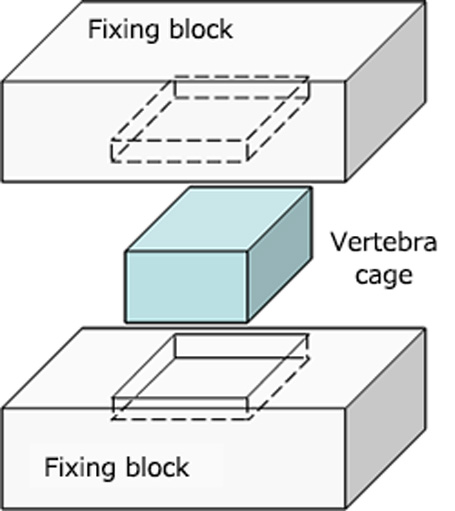Evaluation of Medical Equipment/Implant Materials
Static and Fatigue Tests of Vertebra Cages
Evaluation of the compression, compression shear and torsional characteristics of vertebra cages.
Outline of Static Strength and Fatigue Tests of Vertebra Cages
A vertebra cage is an artificial intervertebral spacer which is used in treatment of vertebra disease. Methods of evaluating the characteristics of vertebra cages are provided in ASTM standards.
This test method, which is one of the above-mentioned methods, is used to evaluate the compression, compression shear and torsional characteristics of vertebra cages. It is provided in ASTM F2077.
In the static tests, the vertebra cage is placed between two stainless steel blocks, and in the fatigue test, the cage is placed between two resin blocks. Compression load, compression shear load and torsion are applied, and the strength, stiffness and other mechanical properties of the vertebra cage are evaluated.
| Corresponding standard | ASTM F2077 |
|---|---|
| Test environment | Constant temperature, constant humidity, in atmosphere |
| Test methods | Compression test, shear test, torsion test |
| Max. load (compression, shear) | 7 kN (static test), 10 kN (fatigue test) |
| Max. torque (torsion) | 100 N-m (in both static test and fatigue test) |
| Max. cycle frequency | 10Hz |
Compression, Compression Shear and Torsion Tests
-

Vertebra cage and fixing blocks -

We can also prepare test reports in English and a number of other languages!
In addition to Japanese, we can also provide test reports in accordance with ASTM, ISO and other standards in English.
We can also provide expert translations in many other languages. Please discuss your language needs with us when making an inquiry or request.


